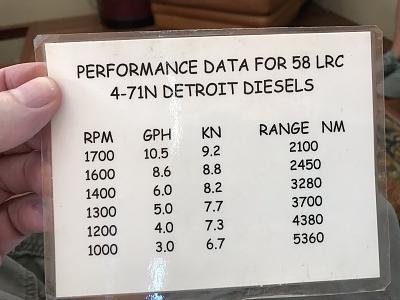Hello all,
We are a family of 5 and looking to pick up a trawler in the next year. I have some sailing experience in the Caribbean, around Vancouver Island, and lived aboard a tall ship that went down to the Galapagos islands and then on to Norway. But I don't want to bring my family onto a sailboat.
So we are looking for a trawler!! We like some space, so a 50-65ft vessel is what we have been looking for. I am quite concerned about the seaworthiness of trawlers. I can see that the Nordhavn is a serious boat that could probably go straight across the Atlantic but I don't have the money for one of those today, a couple of pennies short...
We don't want to cross the Atlantic, we want to go down the East Coast into the Caribbean and then possibly down to Brazil and back up again. So it is not exactly blue water cruising but there will be some longer passes that we could attempt. We will spend most of our time diving and snorkelling in the Caribbean islands.
I have been looking at Hatteras, Defever, Grand Banks, Ocean Alexanders, and Kadey-Krogens...It seems like the OA and the KKs are maybe best suited for longer passages but they don't always have much living space or nicely laid out living areas. My kids like to move around so some deck space would be nice and a bit of a swim deck is a 100% must. I was also hoping to be able to get a tender and a jet ski onboard while doing passages (maybe it's a bit of a dream to have both). We need at least 3 cabins as well since we have three kids.
How well suited are these brands for anything other than coastal calmish water cruising? We would probably get something with stabilizers but I don't want to put my family into any super sketchy situations on a boat that's not suited for the Caribbean.
Please, I am not looking for lessons on if I am capable of doing it, if my kids are capable of doing it or if we have any idea what it's like living on a boat...I am just looking for a good conversation on the seaworthiness of these trawler brands and if you have suggestions on other models I should be looking at.
Thank you for reading my post and for all the amazing content on this forum.
We are a family of 5 and looking to pick up a trawler in the next year. I have some sailing experience in the Caribbean, around Vancouver Island, and lived aboard a tall ship that went down to the Galapagos islands and then on to Norway. But I don't want to bring my family onto a sailboat.
So we are looking for a trawler!! We like some space, so a 50-65ft vessel is what we have been looking for. I am quite concerned about the seaworthiness of trawlers. I can see that the Nordhavn is a serious boat that could probably go straight across the Atlantic but I don't have the money for one of those today, a couple of pennies short...
We don't want to cross the Atlantic, we want to go down the East Coast into the Caribbean and then possibly down to Brazil and back up again. So it is not exactly blue water cruising but there will be some longer passes that we could attempt. We will spend most of our time diving and snorkelling in the Caribbean islands.
I have been looking at Hatteras, Defever, Grand Banks, Ocean Alexanders, and Kadey-Krogens...It seems like the OA and the KKs are maybe best suited for longer passages but they don't always have much living space or nicely laid out living areas. My kids like to move around so some deck space would be nice and a bit of a swim deck is a 100% must. I was also hoping to be able to get a tender and a jet ski onboard while doing passages (maybe it's a bit of a dream to have both). We need at least 3 cabins as well since we have three kids.
How well suited are these brands for anything other than coastal calmish water cruising? We would probably get something with stabilizers but I don't want to put my family into any super sketchy situations on a boat that's not suited for the Caribbean.
Please, I am not looking for lessons on if I am capable of doing it, if my kids are capable of doing it or if we have any idea what it's like living on a boat...I am just looking for a good conversation on the seaworthiness of these trawler brands and if you have suggestions on other models I should be looking at.
Thank you for reading my post and for all the amazing content on this forum.

